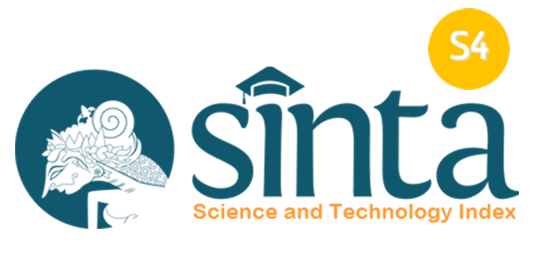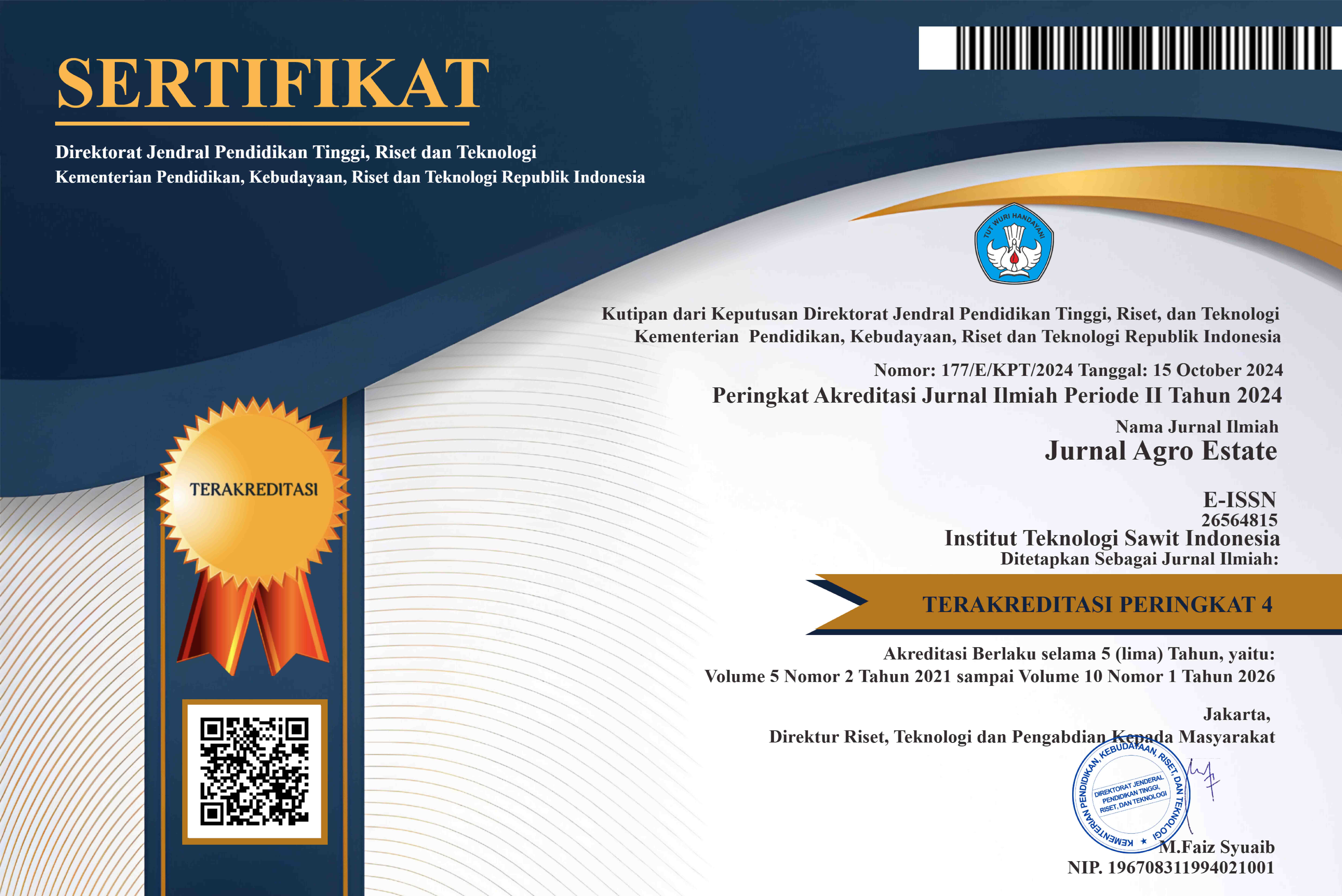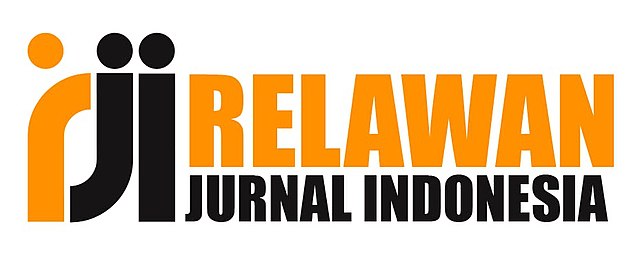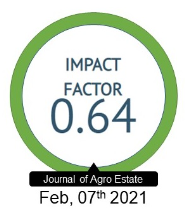UJI EFEKTIVITAS BEBERAPA KONSENTRASI BIOINSEKTISIDA Bacillus thuringiensis DALAM MENGENDALIKAN HAMA ULAT KANTONG (Metisa plana) PADA TANAMAN KELAPA SAWIT
DOI:
https://doi.org/10.47199/jae.v8i1.241Keywords:
Bacillus thuringiensis, bioinsektisida, gejala serangan, ulat kantongAbstract
Oil palm is an important asset of Indonesian plantations. Problems in cultivation are mainly bagworm (Metisa plana) attacks that reduce growth by eating oil palm leaves and reducing yields. To overcome this problem, the application of bioinsecticides such as Bacillus thuringiensis (Bt) is a substitute for chemical pesticides. Bt produces toxic crystalline proteins that target the insect's gut
receptors, so it does not harm non-target organisms. The research was conducted in Teluk Panji IV Village, North Sumatra. The research design used a completely randomized design with five treatments and four replicates for seven days. The treatments were the use of Bt at concentrations of 0, 5, 10, 15, and 20 grams per liter. This study aims to assess the dose of Bt application as a sustainable pest management strategy in oil palm cultivation. The results showed that the treatment of Bt doses (0.5 g/L, 10 g/L, 15g/L, and 20 g/L had no significant effect on each observation variable. Symptoms of bagworm infestation included decreased appetite and movement within 24 hours after application, followed by discoloration and dark brown discharge between days 3 to 5,
which eventually led to death and decay. Although the treatment results were not significant, the use of Bt bioinsecticide can still be used to control bagworm pests because some bagworms in this study died There were 51 caterpillars with the highest mortality at 20 g/l concentration.
Downloads
References
Agustina, N.A. (2021) ‘Tingkat serangan hama ulat api’, Jurnal Ilmiah Rhizobia, 3(1), pp. 50–5.
Amirhusin, B. (2014) ‘Penggunaan Bacillus thuringiensis sebagai Bio-Insektisida’, Buletin agrobio, 5(1), pp. 21–28.
Darmawan, U.W. et al. (2020) ‘Spesies Ulat Kantong Dan Musuh Alaminya Yang Berasosiasi Dengan Tanaman Sengon’, Jurnal Penelitian Hutan Tanaman, 17(1), pp. 1–13. Available at: http://www.nostarch.com/javascriptforkids%0Ahttp://www.investopedia.com/terms/i/in_specie.asp%0Ahttp://dspace.ucuenca.edu.ec/bitstream/123456789/35612/1/Trabajo de Titulacion.pdf%0Ahttps://educacion.gob.ec/wp-content/uploads/downloads/2019/01/GUIA-METODOL.
Dr. Ir. Ilhamiyah, MM; Prof. Dr. Ir. Akhmad Gazali, M. and Dr. Achmad Jaelani, S.Pt, M.S. (2022) Pemanfaatan Bacillus thuringiensis berliner sebagai agen hayati pengendali serangga hama ramah lingkungan. Banjarmasin: Universitas Islam Kalimantan Muhammad Arsyad Al-Banjary Banjarmasin.
Elefianis, R. (2020) Cara Kerja Bakteri Bacillus Thuringiensis, agrotek.id. Available at: https://agrotek.id/cara-kerja-bakteri-bacillus-thuringiensis/ (Accessed: 16 June 2024).
Fauzi, Y. et al. (2012) Kelapa Sawit. Depok: Penebar Swadaya.
Mafazah, A. and Zulaika, E. (2017) ‘Potensi Bacillus thuringiensis dari Tanah Perkebunan Batu Malang sebagai Bioinsektisida terhadap Larva Spodoptera litura F.’, Jurnal Sains dan Seni ITS, 6(2), pp. 4–8. Available at: https://doi.org/10.12962/j23373520.v6i2.27447.
Puspita, Y. (2023) Bacillus Thruingiensis, Mikroroganisme pembasmi Hama Tanaman, berkebun.net. Available at: https://www.berkebun.net/mikroorganisme-pembasmi-hama-tanaman/#google_vignette (Accessed: 16 June 2024).
Riady, K., Anwar, A. and Efendi, S. (2020) ‘Ulat kantung (Lepidoptera: Acrolophidae) hama utama kelapa sawit: kelimpahan populasi, tingkat serangan dan musuh alami pada perkebunan rakyat’, Crop Agro : Jurnal Ilmiah Budidaya Pertanian, 13(1), pp. 54–61. Available at: https://doi.org/https://doi.org/10.29303/caj.v13i1.502.
Downloads
Published
How to Cite
Issue
Section
License
Copyright (c) 2024 Jurnal Agro Estate

This work is licensed under a Creative Commons Attribution-ShareAlike 4.0 International License.























